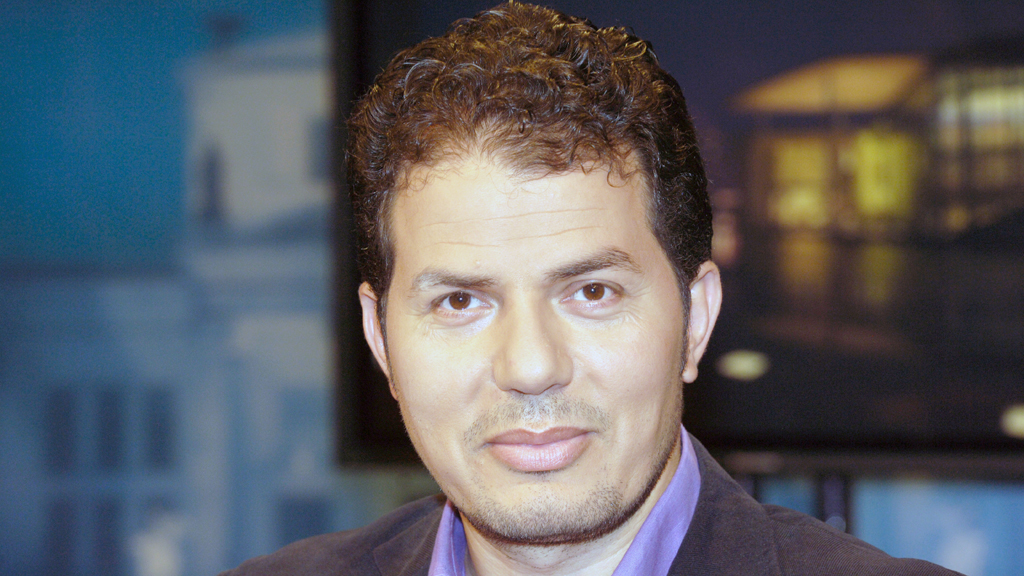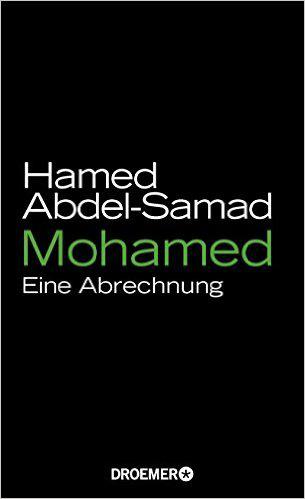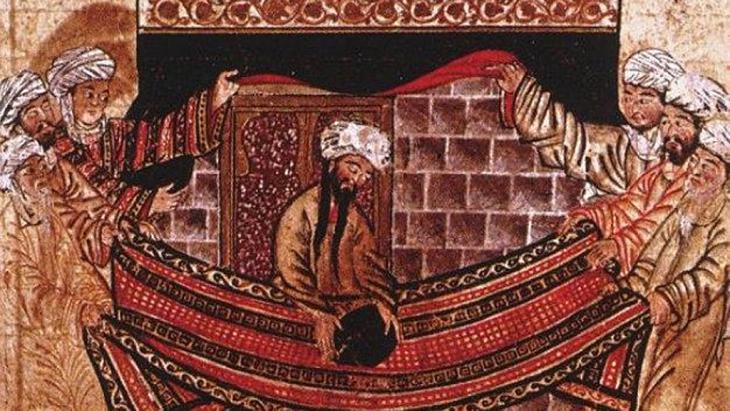From critique of Islam to post-Salafism

The new book by the Egyptian-German journalist Hamid Abdel-Samad – a well-known figure on German television – about the prophet of Islam claims to be both a ″reckoning″ (according to the title) with the prevalent Muslim image of Mohammed and a critique of the historical figure himself.
Abdel-Samad counters many Muslims′ idealised image of Mohammed with a largely negative portrait of his own creation. Surprisingly, the author is apparently convinced he has pinned down the genuine historical Mohammed, right down to his mental state, even though the prophet died in the year 632 and there are no documents by or about him – other than the Qur′an – dating back to his lifetime.
Question of authenticity
In the introductory chapter, Abel-Samad therefore correctly establishes that ″we have no clear historical evidence for what he (Mohammed) actually did or said. (…) In addition, one can only poorly judge a person who lived and worked in the 7th century on the basis of the knowledge and standards of the 21st century. ″ Despite this admission, Hamed Abdel-Samad goes on to do precisely that: he judges the prophet by today′s measures, based on the questionable documents of the past.
The result is as malicious as can be expected: the conclusion the author reaches is that Mohammed was an epileptic and a psychopath. This standpoint is fatally reminiscent of the depiction of Mohammed as a false prophet, epileptic and paranoid despot, as introduced by the medieval Christian confrontation with Islam upon the first encounters between Occident and Orient, and currently being revived by the modern-day foes and critics of Islam, who include Abdel-Samad himself.

Throughout, Mohammed′s actions are compared to the rampages of the Islamic State (or the Mafia) and condemned on that basis. And commenting that Mohammed had ″become radicalised″ comes across as though Abdel-Samad were writing a report on the prophet for the domestic intelligence service. Linking into current news reports as they do, such argumentative shortcuts appear extremely suggestive and convincing at first glance; on reflection, however, they are disconcerting.
Random selection of sources
Abdel-Samad accuses reformers of Islam of being inconsequential if they only pick those aspects out of the stories passed down about Mohammed that seem acceptable to us today, while ignoring other aspects. They treat the prophet′s biography, he claims, the same way as terrorists do, choosing only what they need to justify their actions at any one point. Unfortunately, however, Abdel-Samad uses the very same technique, neatly gathering up precisely those elements of the literature that he believes will back up his own (negative) image of Mohammed.
Yet Abdel-Samad is guilty of far greater naivety than his random choice of sources. Ultimately, he owes his image of Islam and Mohammed to precisely the fundamentalist Salafist branch of Islam that he intends to combat. The difference between Abdel-Samad′s depiction of Mohammed and that of a Salafist is not in the content, but in the evaluation: Abdel-Samad objects to the same things the Salafists consider worth emulating. Both poles believe there is one true Mohammed, and they are the ones who know who and what he is.
Value judgements, biases and sentencing are of no use when dealing with questionable ideologies, however. What we ought to be doing is analysing them and revealing the presumption of their claims to validity, rather than simply claiming the opposite is true.
Prophet with human weaknesses
″Reformed thinking begins when Muslims dare to release Mohamed from the cage of sacrosanctity and allow him to be human, ″ writes Abdel-Samad towards the end of the book. One is inclined to agree with him. Except that this statement implies that Mohammed has always been sacrosanct to all Muslims. In making it, Abdel-Samad, himself far too heavily influenced by the fundamentalist interpretation of Islam, overlooks the fact that precisely this human view of Mohammed was and, in many cases, still is highly influential on the Muslim perception of the prophet. And only because the Muslim tradition shows the prophet with all his human weaknesses is it even possible for Abdel-Samad to discredit Mohammed as mentally ill with the aid of Muslim sources.

To each his own image of Mohammed
Contrary to Abdel-Samad′s assertions, in other words, the Islamic sources do not censor the image of Mohammed – an impossible undertaking, given the large number of narratives about him. Instead, they provide ground for a wild proliferation allowing everyone to put together their own image of the prophet; including, of course, Hamed Abdel-Samad. But this uncontrolled proliferation, as chaotic as it may seem, cannot be used as an argument against Islam.
The only argument against Islam is the procedure of modern fundamentalism, which misunderstands the prophet′s weaknesses as exemplary characteristics for Muslims and seeks to get a grip on the unordered mass of sources, as is typical of modern ideologies. Tangled up in such ideological thought patterns (one might call it post-Salafism), Abdel-Samad fails to see the irony of the diffuse sources on the life of Mohammed: that in the end every believer, whether they want to or not, must fall back on their own judgement and conscience.
We must continue waiting, in other words, for a book on the prophet of Islam that might liberate us from the cul-de-sac of the eternal pro and contra and instead show Mohammed as what he has always been: a blank canvas, a screen that shows nothing but what is projected onto it.
Those wishing to pass the waiting time by really learning something about the prophet could meanwhile work their way through Tilman Nagel′s 1000-page Mohammed biography. Unlike Abdel-Samad (who derives most of his knowledge from Nagel), this author gives a sterling example of what far-reaching analysis and critical reading of sources can achieve.
A closing remark: it is surprising to note that Abdel-Samad does not use the usual German spelling of the prophet′s name with a double M, but instead, presumably inspired by Anglophone popular science writers, writes it with a single M in the middle. The fact is, however, that the spelling “Mohammed” is closer to the original Arabic and is also the accepted spelling in the academic world (alongside “Muhammad”). It will be fascinating to observe which commentators choose to follow Abdel-Samad′s post-Salafist interpretation of Islam by adopting his spelling.
Stefan Weidner
© Qantara.de 2015
Translated from the German by Katy Derbyshire
Hamed Abdel-Samad: Mohamed. Eine Abrechnung, Droemer Verlag, Munich 2015. 240 pp., 19.99 Euro.
Stefan Weidner is an Islamicist and translator of Arabic texts. His most recent publication is "Anti-Pegida" from Amazon Kindle Singles.